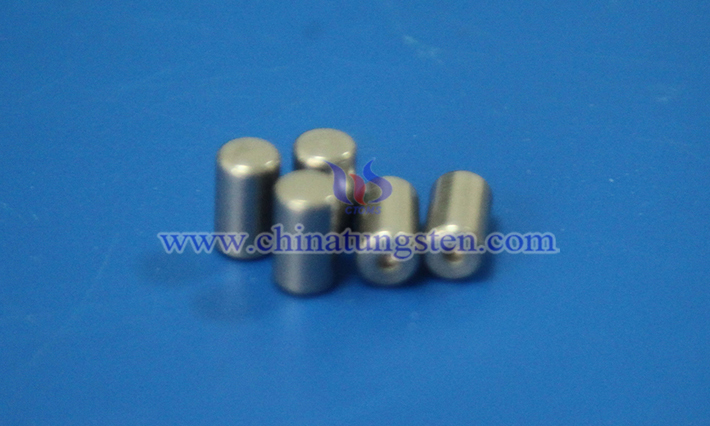Barium Tungsten Electrodes for Microwave Devices
- Details
- Category: Tungsten Information
- Published on Sunday, 27 April 2025 18:48
The barium tungsten electrodes are primarily used as thermionic emission cathodes in microwave devices, widely applied in various microwave vacuum devices such as magnetrons, klystrons, and traveling wave tubes. These devices play critical roles in radar systems, communication technologies, and electronic countermeasure systems. By releasing free electrons at high temperatures, barium tungsten electrodes enable the oscillation and amplification of microwave signals, fulfilling the stringent requirements of high-frequency, high-power applications.

I. Basic Characteristics of Barium Tungsten Electrodes
Barium tungsten electrodes are typically made from a porous tungsten matrix impregnated or coated with active materials (such as barium compounds) to enhance thermionic emission performance. Their key characteristics include:
1. High Melting Point and Stability: Tungsten’s extremely high melting point and excellent thermal stability enable long-term stable operation in high-temperature vacuum environments, making it suitable for the high-power conditions of microwave devices.
2. Efficient Electron Emission: Barium compounds reduce the work function at high temperatures, facilitating the release of free electrons and providing a high-density electron flow to support signal amplification and oscillation in microwave devices.
3. Corrosion Resistance and Long Lifespan: The chemical stability and mechanical strength of the tungsten matrix ensure a long service life in harsh environments, reducing the frequency of device maintenance.
4. Potential for Structural Optimization: By adjusting the pore structure of the tungsten matrix or optimizing the active material formulation, emission efficiency and performance uniformity can be further improved.
II. Application Scenarios of Barium Tungsten Electrodes in Microwave Devices
1. Radar Systems: In radar transmitters, barium tungsten electrodes serve as cathodes in magnetrons or klystrons, providing a stable electron flow to generate high-power microwave signals for target detection and tracking. Their efficient emission capability ensures reliable operation of radar systems in high-frequency bands.
2. Communication Systems: In satellite and terrestrial microwave communication, barium tungsten electrodes are used in traveling wave tubes and klystrons to amplify microwave signals, enabling long-distance, high-bandwidth data transmission. Their high stability and long lifespan meet the stringent reliability requirements of communication equipment.
3. Electronic Countermeasures Systems: In electronic warfare equipment, barium tungsten electrodes support microwave devices in generating interference signals or high-power pulses to disrupt enemy radar or communication systems. Their high current density and rapid response capability meet the instantaneous power demands of countermeasures systems.

III. Advantages of Barium Tungsten Electrodes in Microwave Devices
1. High Efficiency: Low work function and high electron emission efficiency allow high current density at lower operating temperatures, reducing energy consumption and enhancing device efficiency.
2. Suitability for High-Frequency Needs: Microwave devices operate in the 300 MHz to 300 GHz frequency range, and the stable electron emission of barium tungsten electrodes supports the generation and amplification of high-frequency signals.
3. Reliability and Durability: The high-temperature tolerance and corrosion resistance of the tungsten matrix ensure stable performance during high-power, long-term operation, extending device lifespan.
4. Process Flexibility: The fabrication process of barium tungsten electrodes can be optimized by refining the tungsten matrix structure or active material formulation, enabling adaptation to the design requirements of various microwave devices.
- Chinatungsten Online: www.tungsten.com.cn
- CTIA GROUP LTD: en.ctia.group
- Tungsten News & Price: www.ctia.com.cn
- Molybdenum News & Price: news.molybdenum.com.cn
- Tel.: 86 592 5129696; Email: sales@chinatungsten.com



 sales@chinatungsten.com
sales@chinatungsten.com